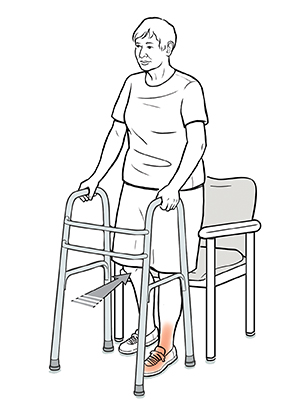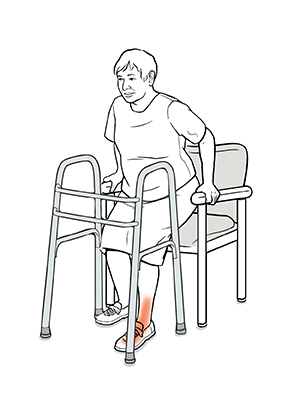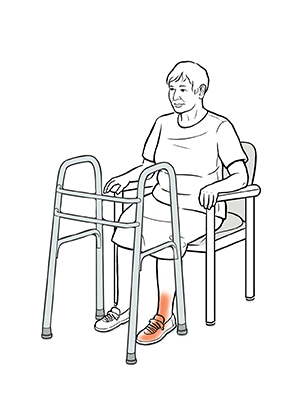Your health care provider has prescribed a walker for you. To use your walker, you need to learn new ways to get around. A walker can help you when you get up from and sit down on a chair or other furniture. If you have had your hip replaced, you may need special instructions. Ask your provider or physical therapist to show you the best way to move safely.
General guidelines
Here are some general tips:
-
Remove things in your home that may cause you to fall, such as electrical cords or small rugs.
-
Arrange your household to keep the items you need handy. Keep everything else out of the way.
-
Keep your hands free by using a backpack, fanny pack, apron, or pockets to carry things.
To sit down
To sit down using a walker:
-
Back up until you feel the chair behind you. If you have an injured leg, knee, or hip, extend that leg a little bit out in front of you.
-
Bend forward at your hips.
-
Reach behind you with one hand and grab the armrest or the side of the chair.
-
Now do the same with the other hand.
-
Lower yourself onto the center of the chair, then slide back.
To stand up
To stand up using a walker:
-
Slide forward in the chair until both your feet are firmly on the floor and you can reach the crossbar of the walker.
-
Hold the crossbar of the walker with one hand and the arm of the chair with the other. Never try to use only the walker to stand up. The walker could tip over.
-
Raise yourself slowly off the chair.




